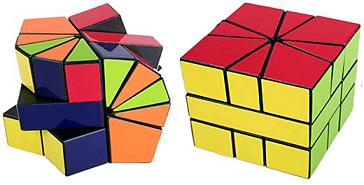|
Learning Styles - How Is Your Child Smart?What Makes Your Child Learn? 8 Things You Need to Know About How Your Child is SmartLearning styles vary and as a mom of two and a teacher, one of the first things that I realized was that every child (and adult for that matter) has their own learning style - their own way of being smart. What do I mean by this? I mean that every individual has one or more ways in which they learn best - a way in which they make sense of things or process information. So why is this important (you may ask)? As a parent (teacher or student for that matter), if you know how your child learns, then you will also be able to figure out (to a degree) which teaching methods and styles will be of most benefit to your child. This may be why your child does not seem to "get it" when he is taught science from the text book, yet when he is taken outside where he can see and touch what he is learning about, he comes home wanting to be a scientist! What made the difference? The difference is in his learning style - the manner in which he best processes information. Another example may be that your child (like mine) finds it easier to memorize telephone numbers when they are put to music. Yet when asked to recite the months of the year (even after several teaching sessions), she just could not seem to get them in order - until of course, we put them to music. Howard Gardener (a really smart guy by all accounts) did a lot of research on this and developed a theory called "multiple intelligence". Gardener figured that everyone is smart or intelligent, only in different ways! Here are the ways of smartness or intelligence that his research came up with; Musical:This is one of them most productive ways in which my oldest daughter learns. For example we put almost anything she needs to remember to a musical tune - this includes our telephone numbers, sounds of letters, spelling rules (i before e except after c), her lines to the nativity play - anything. And guess what? Years later, she still remembers some of those tunes as well as the all important facts. Try it sometime - even if you aren't the Von Trap Family Singers ;) It might make your child's learning experience more enjoyable while you have some fun too!
Naturalistic:My friend Erin learns best this way. She loves the great outdoors, enjoys fishing, camping and kayaking. What does this mean for her learning style? Her mind is most receptive when she is outside and in tune with nature. Is it any wonder that Erin is a science major and teacher who always wants to take her students outside to teach them? Linguistic:Traditional teaching or lecturing usually targets learners who can best grasp written or spoken words. A teacher stands in front of a class and talks, hoping that the class has the ability or the right learning styles to catch on! Now that we know that not everybody learns this way, doesn't it make you wonder how many people fell through the cracks? While I know that a teacher cannot target all forms of intelligence, using more that one form is always a better idea. Mathematical/Logical:Some people just thrive when it comes to numbers or logic. You know, the child who always finishes the puzzles first or the one who calculates problems mentally at lightening speed. That is the person who has in-built mathematical or logical learning style! Believe me, that was not me as a kid..... Bodily/Kinesthetic:This is usually the child who needs to touch everything. I get the feeling my husband used to be like this when he was a child (smile)! He still wants to fix everything around him - in fact my eldest is convinced that "Daddy can fix anything". Many boys fall into this way of being smart and as parents and teachers we will benefit from teaching them in a way that learning will be achieved. They tend to enjoy hands-on experiments, making things with their hands - construction toys, playing with lego and blocks. Spatial:This is where one learns through pictures, wide space or confined areas. In this day and age where almost everything is visual, you can only begin to imagine how many people learn this way. In other words if your child can learn through pictures or spatial representation, let the picture be worth a thousand words! Interpersonal:Learning of this kind takes place through social experiences such as role play and team work. People who do well with this learning style are good judges of character - they can read people's intentions and motivations. While this used to be something that you either had or didn't have; these days so much of the day to day teaching is done in teams that this is becoming an acquired skill. If it comes naturally to your child, consider them well equipped to be smart when dealing with people. Intrapersonal:The focus of this learning style is based on self or inner reflection. This would be your quiet student who may not contribute much in class, but always seems to ace the quizzes. The one who may not always raise their hand to answer questions in class, but when asked directly, they almost always answer correctly. They learn by thinking deeply through all that they have heard.
|
